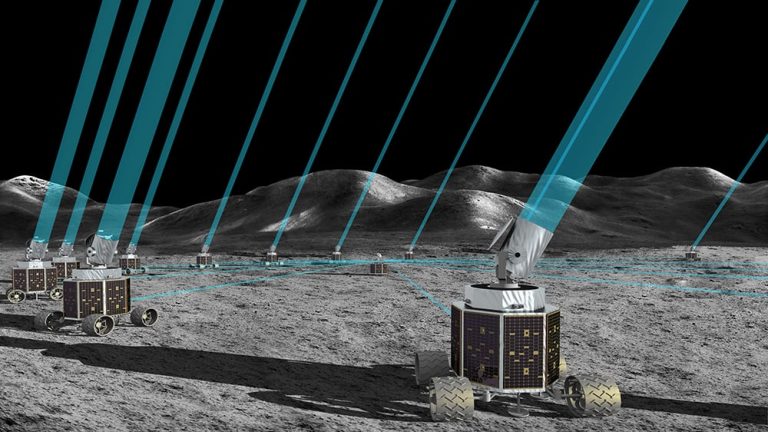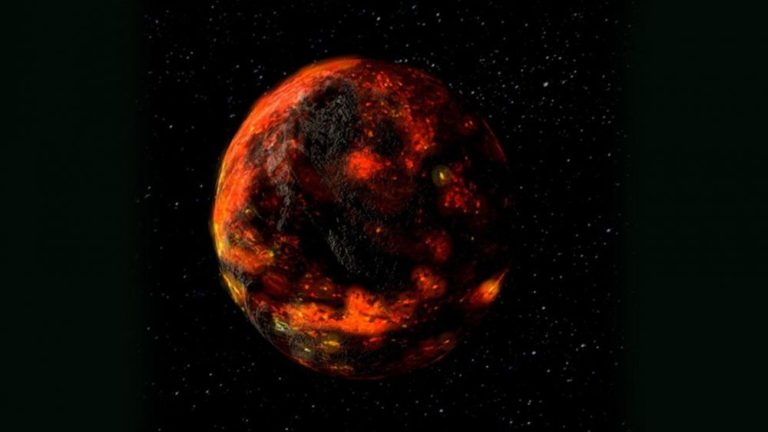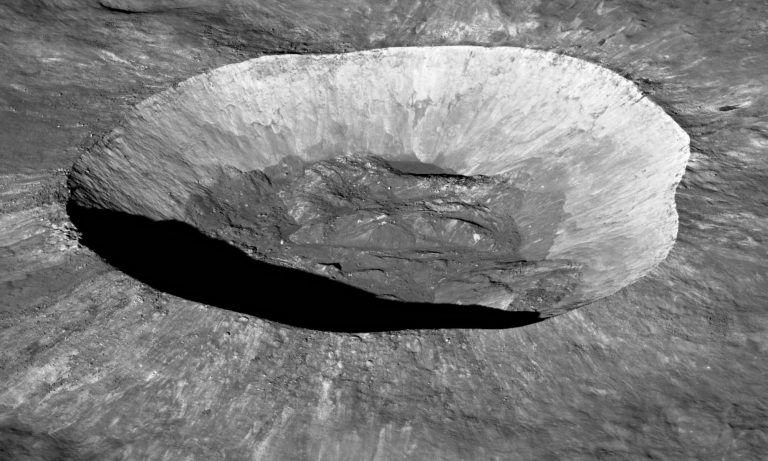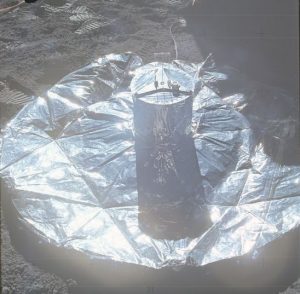Lunar Interferometer Progress: A Giant Leap for Astronomy
The proposed Artemis-enabled Stellar Imager (AeSI) is an innovative project that uses a network of telescopes deployed on the Moon to overcome Earth-based limitations and free-flyer constraints, opening a new era of astronomical observations with unprecedented clarity.
Summary
-
Innovative Concept: AeSI employs an array of telescopes on the lunar surface to capture high-resolution images in optical and ultraviolet light.
-
Collaborative Effort: The project is led by Dr. Kenneth Carpenter at NASA Goddard Spaceflight Center and works in collaboration with the Artemis program.
-
Scientific Breakthroughs: AeSI aims to study stellar surfaces, interior structures, active galactic nuclei, accretion disks, and supernovae.
-
Technological Advancements: The design integrates advanced mirror coatings, high-sensitivity detectors, and robust communication systems.
-
Future Implications: The project could transform our understanding of solar activity, stellar magnetism, and cosmic evolution.
-
Lunar Environment Benefits: The Moon’s lack of atmosphere ensures clear imaging free from terrestrial distortions.
-
Deployment Strategy: The telescopes are to be deployed by astronauts and robots, leveraging Artemis-established infrastructure.
-
Enhanced Observational Capabilities: The system promises to achieve higher resolution imaging by operating in the UV spectrum.
-
Robust Engineering: Solutions are being developed to counter lunar dust, moonquakes, and deployment logistics.
-
Expanding Horizons: AeSI could pave the way for future large-scale interferometers and international collaborations.
Introduction
The Lunar Interferometer Progress represents a major breakthrough in space-based astronomy. With the Artemis-enabled Stellar Imager (AeSI), scientists are setting out to harness the unique environment of the Moon to study the cosmos. This initiative builds upon previous free-flying interferometer concepts and leverages the upcoming Artemis missions to overcome many of the challenges faced by Earth-bound observatories. By establishing an array of telescopes on the lunar surface, researchers hope to capture images with clarity and detail that have never been seen before.
The AeSI project focuses on capturing high-resolution images of various cosmic phenomena including stellar surfaces, active galactic nuclei, and supernova remnants. The vision is to provide critical data that will allow astronomers to gain deeper insights into the workings of stars and the evolution of galaxies. With a design that incorporates a 1-kilometer elliptical array of 15-30 telescopes, AeSI aims to combine the best of optical and ultraviolet (UV) imaging technologies.
The Concept of AeSI
The AeSI project is built on the idea of deploying a series of one-meter telescopes in a coordinated array on the Moon. These telescopes work together as an interferometer—a system that combines the light captured by each telescope to form highly detailed images. The absence of an atmosphere on the Moon means that light is not distorted by atmospheric turbulence, allowing the system to achieve a resolution that is superior to most Earth-based observatories.
A key driver behind the project is the progress of NASA’s Artemis program. With Artemis paving the way for renewed human presence on the Moon, the possibility of deploying scientific instruments there becomes much more practical. The AeSI concept was refined through a nine-month feasibility study funded by NASA’s Innovative Advanced Concepts (NIAC) program. This study confirmed that building, deploying, and servicing such an interferometer is within reach, making it a competitive alternative to free-flying space-based arrays.
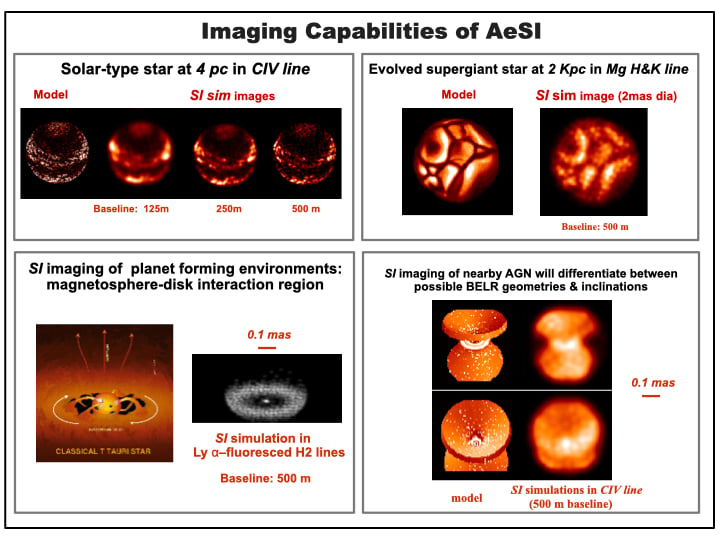
Scientific Goals and Observations
AeSI is designed to address some of the most pressing questions in astrophysics today. The project’s scientific goals include:
Stellar Surface Imaging: By imaging the surfaces of stars—especially those similar to our Sun—astronomers can observe features like starspots, plages, and convective cells. This data is essential for understanding magnetic activity and the underlying mechanisms that drive these phenomena.
Asteroseismology: In addition to surface imaging, AeSI will employ asteroseismology to probe the internal structures of stars. This dual approach—combining surface and interior observations—will help scientists build accurate models of stellar dynamics and evolution.
Accretion Disk Studies: AeSI will target young, nascent stars surrounded by accretion disks. These disks are critical to the process of star formation, and detailed observations can provide insight into how stars gather mass over time.
Active Galactic Nuclei (AGN): By imaging the bright, central regions of active galaxies, AeSI aims to study the complex dynamics around supermassive black holes. This includes capturing details of AGN winds, which are key to understanding how galaxies evolve.
Supernova Observations: Early-stage observations of supernovae can reveal the initial expansion of debris clouds following a stellar explosion. Such observations will improve our understanding of these catastrophic events.
The unique capabilities of AeSI, particularly in the UV range, promise to unlock a wealth of information about the universe. The Moon’s clear, stable environment is ideal for such high-precision observations.
Table 1: AeSI Telescope Array Specifications
| Parameter | Specification |
|---|---|
| Number of Telescopes | 15-30 |
| Telescope Diameter | 1 meter each |
| Array Shape | 1 km elliptical |
| Wavelength Range | Optical & Ultraviolet |
| Deployment Method | Robotic & Astronaut-Assisted |
Collaboration and Deployment Strategy
The success of AeSI relies heavily on collaboration between various experts and institutions. Led by Dr. Kenneth Carpenter at NASA Goddard Spaceflight Center, the project is a joint effort that also involves the Integrated Design Center and multiple partners from the Artemis program. The Artemis missions are critical to this project because they provide the necessary infrastructure on the lunar surface—such as habitats, power systems, and communication networks—to support the installation and maintenance of the interferometer.
A well-planned deployment strategy is essential. The telescopes will be delivered and positioned on the Moon using both robotic systems and astronaut assistance. The planned sites for AeSI are near the lunar south pole, where existing Artemis infrastructure will facilitate easy access and maintenance. In some cases, locations at lower lunar latitudes may also be considered if they offer a broader view of the sky.
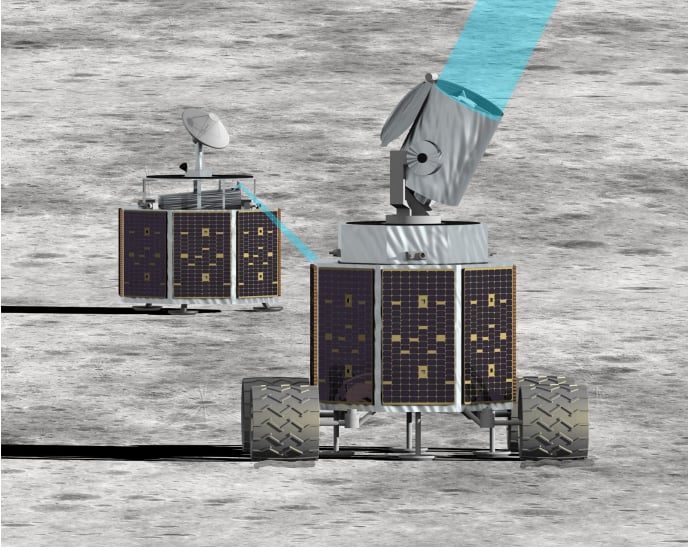
Table 2: Artemis Mission Timeline and AeSI Deployment
| Phase | Estimated Timeline | Key Features |
|---|---|---|
| Initial Deployment | Spring 2026 (Crewed Mission) | Establishment of lunar habitats and communication networks |
| Expansion Phase | Late 2030s to Early 2040s | Deployment of additional telescopes and support systems |
| Full Operation | Mid 2040s | Integration of advanced imaging and data analysis centers |
Technological Advances
AeSI is not just about deploying telescopes—it is about integrating advanced technology to push the boundaries of astronomical observation. The project leverages state-of-the-art components such as high-sensitivity UV detectors and innovative mirror coatings that enhance reflectivity in the ultraviolet spectrum. These advancements are crucial because they allow the telescopes to capture light that would otherwise be lost or distorted.
The design of AeSI also incorporates robust communication systems that enable the collection and processing of vast amounts of data. The data gathered by the telescopes will be sent to a central beam-combining hub, where advanced algorithms reconstruct detailed images of the observed objects. This approach ensures that the system can adapt to a wide variety of scientific investigations—from the study of individual stars to the imaging of complex structures in distant galaxies.
Challenges and Engineering Solutions
While the prospects for AeSI are exciting, several challenges need to be addressed:
Lunar Dust: The fine regolith on the Moon poses a risk by potentially covering telescope optics. Engineers are developing protective measures to shield sensitive equipment from dust interference.
Seismic Activity: Moonquakes, although less intense than earthquakes on Earth, can still impact the precision of observations. The system’s design includes damping mechanisms to minimize the effect of lunar seismic activity.
Deployment Logistics: Positioning an array of telescopes on the lunar surface is no small feat. Innovative solutions involving robotic deployment and astronaut-guided installations are being considered to ensure accurate positioning.
UV Sensitivity Enhancements: Improving the UV performance of the system requires continued research into mirror coatings and detector technology. These enhancements are critical for capturing detailed images in the UV spectrum.
Researchers are optimistic that these challenges can be overcome with innovative engineering and collaborative efforts. The project not only advances scientific research but also sets the stage for future lunar-based observatories.
Future Prospects and Impact
The AeSI project has the potential to revolutionize our understanding of the universe. Its ability to capture detailed images of stellar surfaces and interior structures will provide invaluable insights into the processes that govern star formation and evolution. Furthermore, by observing active galactic nuclei and supernovae, AeSI could help astronomers refine models of cosmic evolution and distance measurement.
The long-term implications of AeSI include:
Enhanced Solar Forecasting: Detailed studies of stellar activity, especially for stars like our Sun, could lead to improved models of solar behavior. This would be invaluable for predicting space weather and mitigating its impacts on Earth.
Expanded Astronomical Capabilities: The success of AeSI may pave the way for larger and more sensitive interferometers on the Moon. International collaborations could further expand the scope of lunar-based astronomy.
Technological Innovations: The engineering challenges faced by AeSI drive innovation in telescope design, detector technology, and space infrastructure. These advancements have the potential to benefit other areas of space exploration and research.
The AeSI project is a testament to human ingenuity and the drive to explore the unknown. By merging the stability of the lunar environment with cutting-edge technology, this project could unlock secrets of the universe that have eluded astronomers for decades.
Facts
-
The Moon’s atmosphere is nearly nonexistent, allowing telescopes to capture clearer images without atmospheric distortion.
-
Artemis missions aim not only to return humans to the Moon but also to establish a permanent presence that supports advanced scientific research.
-
AeSI’s design evolved from earlier free-flying interferometer concepts, enhanced by the stable, dust-minimized environment of the lunar surface.

